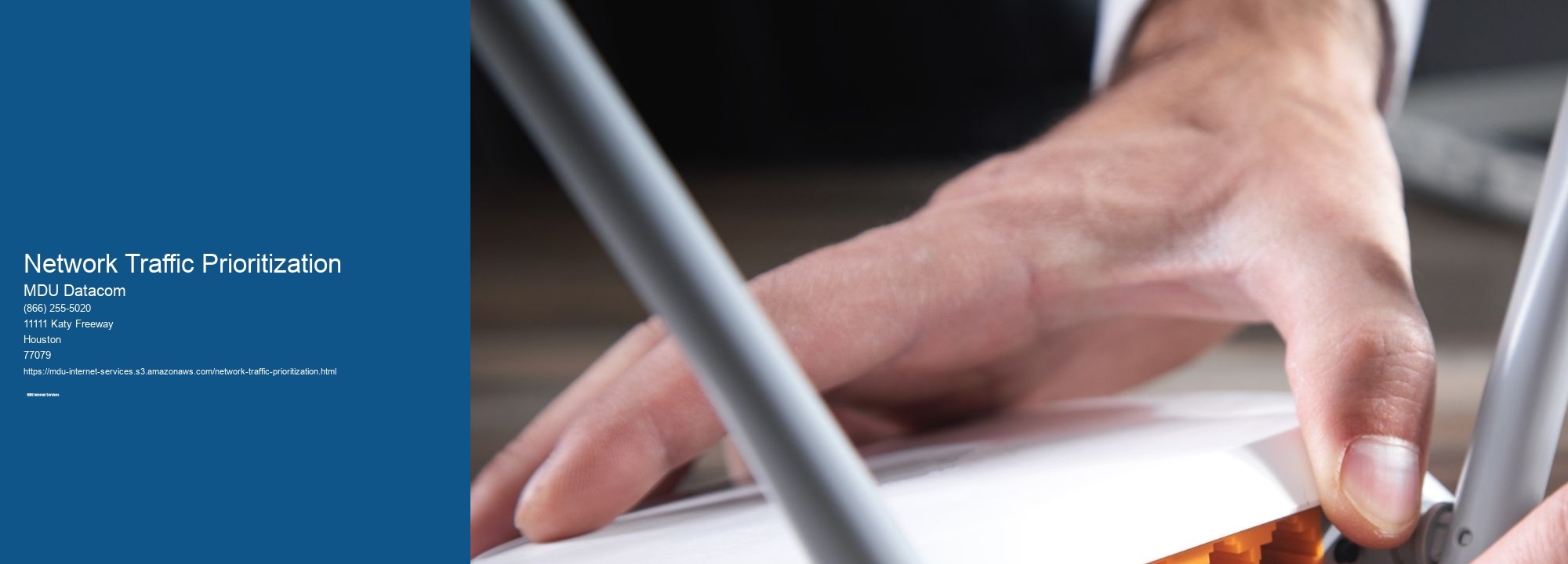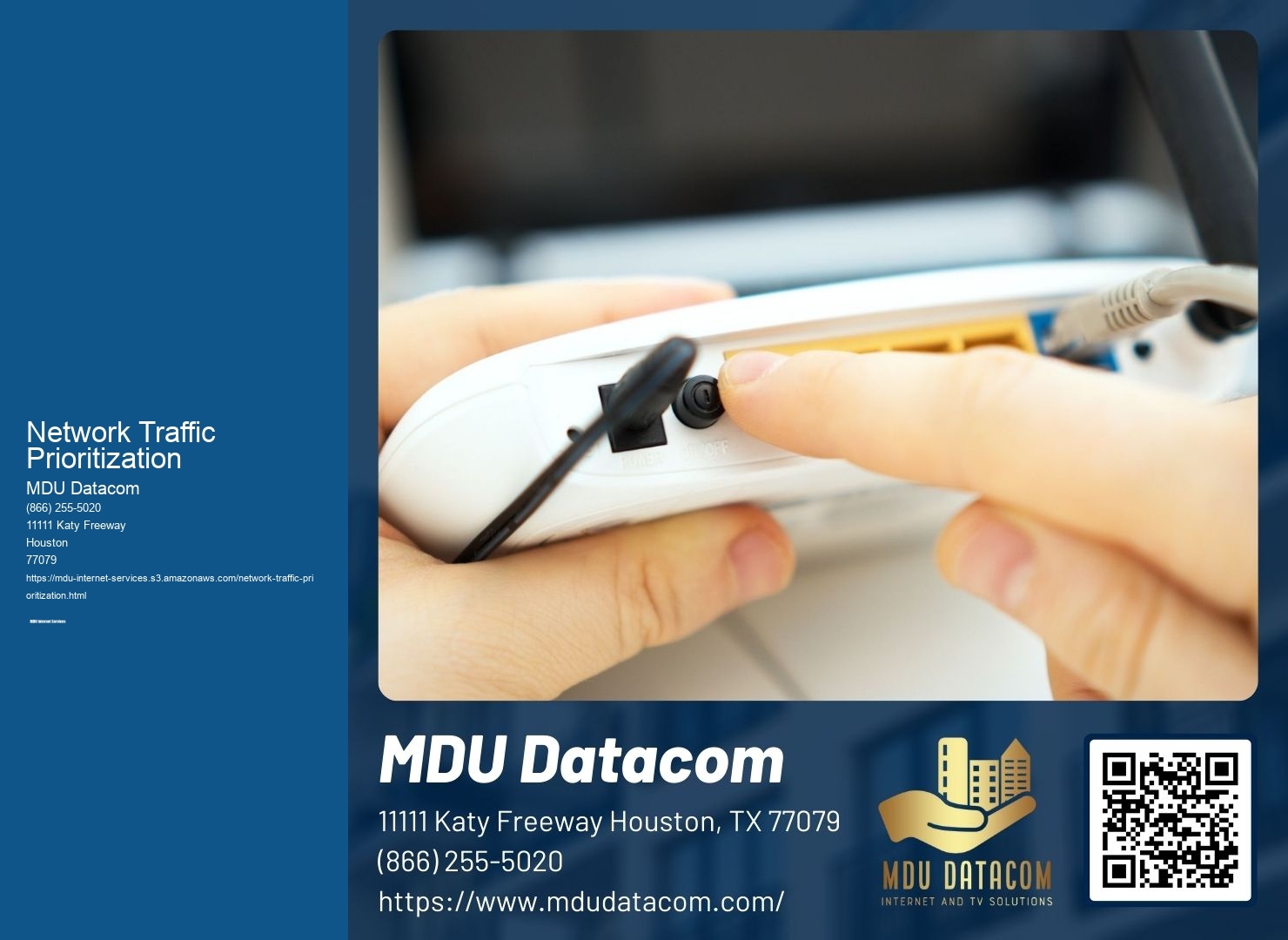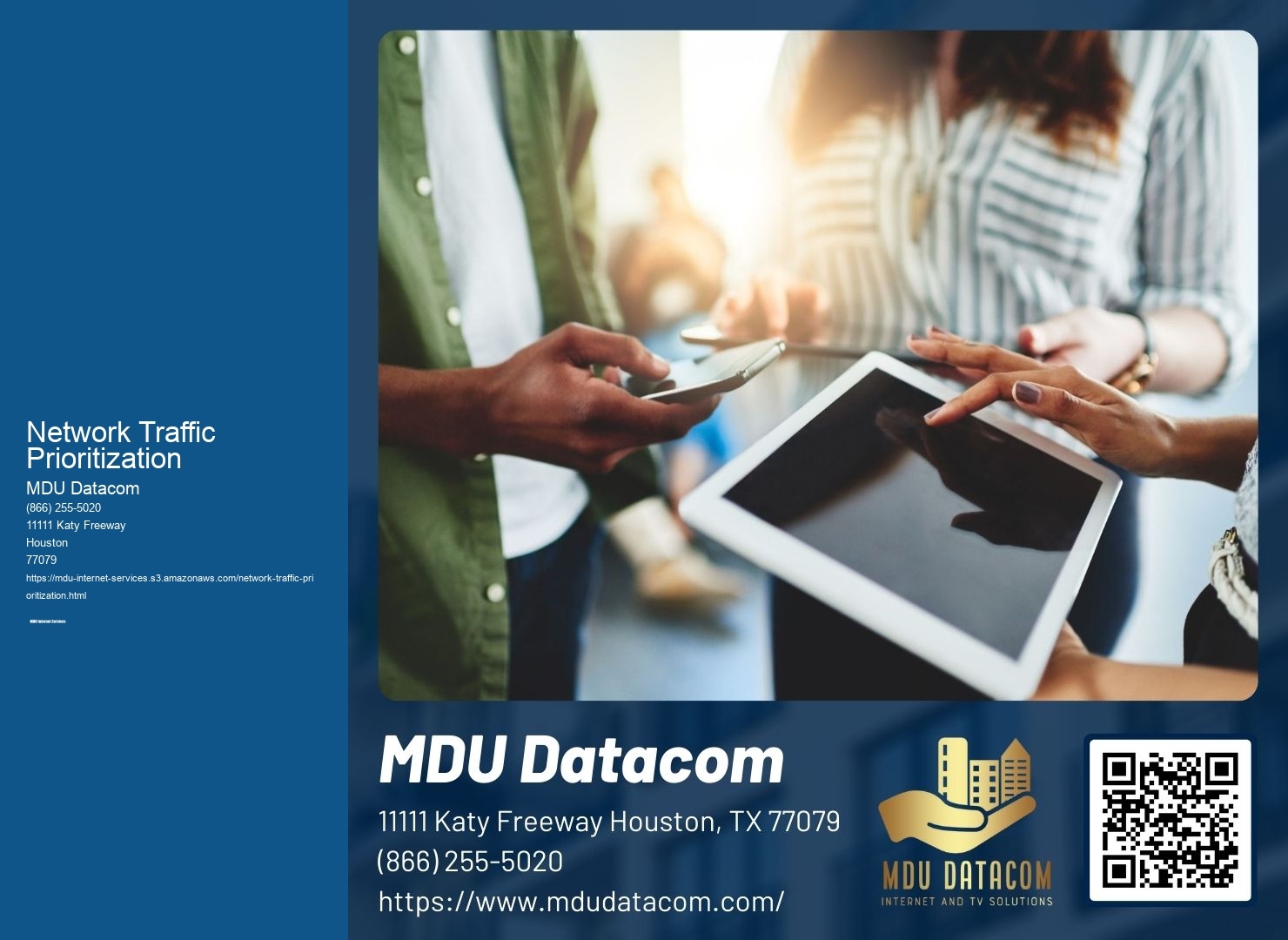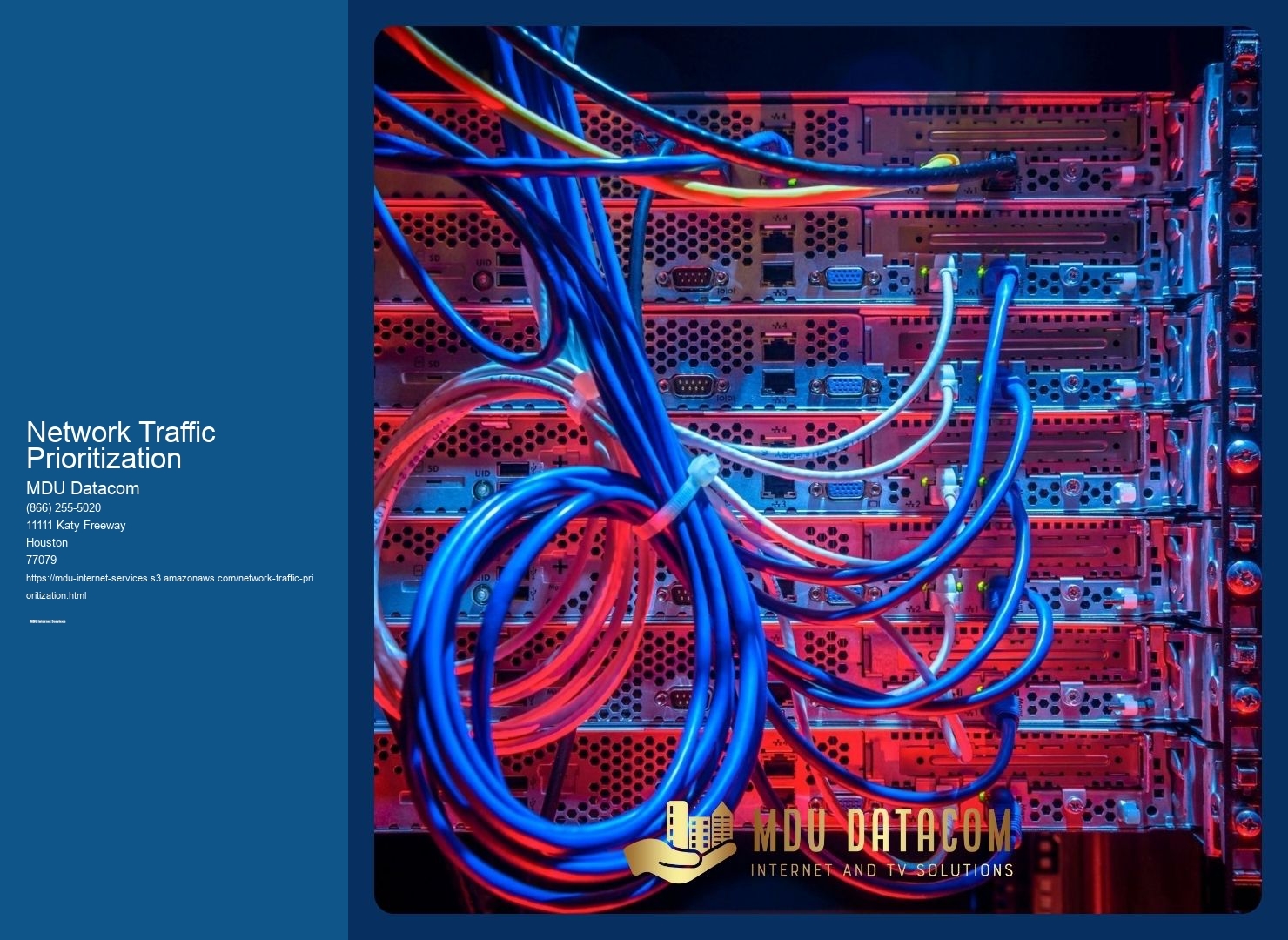

Network traffic prioritization refers to the process of assigning different levels of importance or priority to different types of network traffic. It is important in a network because it allows for the efficient allocation of network resources and ensures that critical applications or services receive the necessary bandwidth and priority they require. By prioritizing network traffic, organizations can optimize their network performance, reduce latency, and improve the overall user experience.
Network traffic prioritization works by implementing various mechanisms and algorithms to identify and classify different types of network traffic. These mechanisms can include Quality of Service (QoS) techniques, such as traffic shaping, traffic policing, and traffic marking. QoS techniques prioritize certain types of traffic over others based on predefined rules or policies. Community Internet Solutions For example, real-time applications like voice or video calls may be given higher priority than non-real-time applications like file downloads. By prioritizing traffic, network devices can allocate resources accordingly and ensure that critical traffic is transmitted efficiently.
There are several methods and algorithms used for network traffic prioritization.

Network traffic prioritization helps improve network performance and reduce latency by ensuring that critical traffic is given priority over less important traffic. By allocating resources based on priority, organizations can ensure that real-time applications, such as voice or video calls, receive the necessary bandwidth and are not affected by other non-critical traffic. This helps in reducing delays and improving the overall quality of service. Additionally, by managing network traffic effectively, organizations can optimize their network utilization and avoid congestion, leading to improved performance and reduced latency.
Implementing network traffic prioritization can come with certain challenges and limitations. One challenge is the complexity of configuring and managing the prioritization mechanisms and algorithms. It requires a deep understanding of network protocols, traffic patterns, and the specific requirements of different applications. Another challenge is the potential for misconfiguration, which can lead to unintended consequences and negatively impact network performance.

Yes, network traffic prioritization can be customized or tailored based on specific network requirements. Organizations can define their own policies and rules for prioritizing traffic based on their unique needs. For example, they can prioritize traffic from specific applications or services, or they can prioritize traffic from certain users or departments. By customizing the prioritization rules, organizations can ensure that their critical traffic receives the necessary priority and resources, while still maintaining a fair allocation of resources for other traffic types.
There are industry standards and best practices for implementing network traffic prioritization. The most widely recognized standard is the Internet Engineering Task Force's (IETF) Differentiated Services (DiffServ) architecture. DiffServ provides a framework for classifying and prioritizing network traffic based on Differentiated Services Code Points (DSCPs). It allows for the creation of different service classes and provides guidelines for implementing QoS mechanisms.

Yes, MDU does offer incentives for property managers to promote internet services to tenants. They understand the importance of providing high-quality internet services to residents and the positive impact it can have on tenant satisfaction and retention. To encourage property managers to promote their internet services, MDU offers various incentives such as discounted rates, exclusive deals, and revenue-sharing opportunities. By partnering with MDU, property managers can not only enhance the overall living experience for their tenants but also generate additional income through the promotion of internet services. These incentives serve as a win-win situation for both MDU and property managers, as they work together to meet the growing demand for reliable and fast internet connectivity in multi-dwelling units.
MDU (Multi-Dwelling Unit) providers have various strategies in place to handle internet outages within apartment buildings. They typically employ redundant network infrastructure, which includes multiple fiber optic connections, routers, and switches, to ensure uninterrupted connectivity. In the event of an outage, MDU providers have dedicated technical teams that promptly investigate and resolve the issue. These teams are equipped with advanced diagnostic tools and equipment to identify the root cause of the outage and restore the internet service as quickly as possible. Additionally, MDU providers often have backup power systems, such as generators or battery backups, to mitigate the impact of power outages on internet connectivity. They also maintain proactive monitoring systems to detect any potential issues before they escalate into full-blown outages. Overall, MDU providers prioritize maintaining a reliable and robust internet infrastructure to minimize disruptions and provide seamless internet services to apartment residents.
MDU, also known as Multi-Dwelling Unit, does offer integration options with smart building management systems or platforms. These integration options allow for seamless connectivity and control of various building systems, such as HVAC, lighting, security, and energy management. By integrating with smart building management systems or platforms, MDU owners and operators can optimize energy efficiency, enhance occupant comfort, and improve overall building performance. These integration options may include the use of IoT devices, sensors, and data analytics to monitor and manage building systems in real-time. Additionally, MDU integration options may also provide features such as remote access and control, predictive maintenance, and advanced reporting and analytics capabilities.
MDU, or Multi-Dwelling Unit, typically addresses complaints regarding slow internet speeds from residents by promptly investigating the issue and taking necessary measures to rectify the situation. Upon receiving a complaint, MDU's technical support team conducts a thorough analysis of the network infrastructure, including routers, switches, and cabling, to identify any potential bottlenecks or connectivity issues. They also assess the bandwidth allocation and distribution within the building to ensure optimal performance. If the problem lies within the MDU's network, they may upgrade the equipment, increase bandwidth capacity, or optimize network configurations. Additionally, MDU may collaborate with internet service providers to troubleshoot any external factors affecting internet speeds, such as network congestion or service outages. By employing these comprehensive measures, MDU strives to provide residents with a satisfactory internet experience and address any concerns regarding slow internet speeds promptly and effectively.
MDU (Multi-Dwelling Unit) takes several robust security measures to safeguard the internet privacy of its residents. Firstly, it employs state-of-the-art encryption protocols to ensure that all data transmitted over its network remains secure and inaccessible to unauthorized individuals. Additionally, MDU implements firewalls and intrusion detection systems to detect and prevent any unauthorized access attempts or malicious activities. It also regularly updates its security software and firmware to stay ahead of emerging threats and vulnerabilities. Furthermore, MDU conducts regular security audits and assessments to identify and address any potential weaknesses in its network infrastructure. It also provides residents with secure login credentials and encourages the use of strong passwords to further enhance privacy protection. Overall, MDU prioritizes the privacy and security of its residents' internet usage by implementing a comprehensive range of security measures.
MDU does offer a range of perks for property managers who exclusively use their internet services. These perks include enhanced customer support, priority installation and maintenance services, discounted rates for bulk subscriptions, and access to advanced management tools and analytics. Additionally, property managers can benefit from seamless integration with other MDU services such as cable TV and phone services, ensuring a comprehensive and convenient solution for their residents. By exclusively using MDU's internet services, property managers can optimize their operations, enhance resident satisfaction, and streamline their overall management processes.
MDU, or Multi-Dwelling Unit, handles requests for custom network configurations within properties by offering a flexible and tailored approach to meet the specific needs of each property. They understand the importance of providing a seamless and efficient network infrastructure that caters to the diverse requirements of residents. MDU collaborates closely with property owners and managers to assess the unique network demands and design customized solutions accordingly. This involves considering factors such as the size of the property, the number of units, the desired bandwidth, and the specific connectivity preferences of the residents. By leveraging their expertise in network architecture and technology, MDU ensures that the custom network configurations are implemented seamlessly, providing residents with reliable and high-speed internet access. They also offer ongoing support and maintenance to address any issues or changes that may arise, ensuring a smooth and uninterrupted network experience for all.
Yes, residents have the option to request a temporary suspension of their internet service during vacations or extended absences. This allows them to avoid unnecessary charges while they are away and ensures that their internet connection remains secure during their absence. By contacting their internet service provider and providing the necessary details, such as the duration of the suspension and the date of their return, residents can easily arrange for their internet service to be temporarily suspended. This service is particularly beneficial for individuals who frequently travel or have extended periods of absence, as it allows them to have control over their internet usage and expenses.